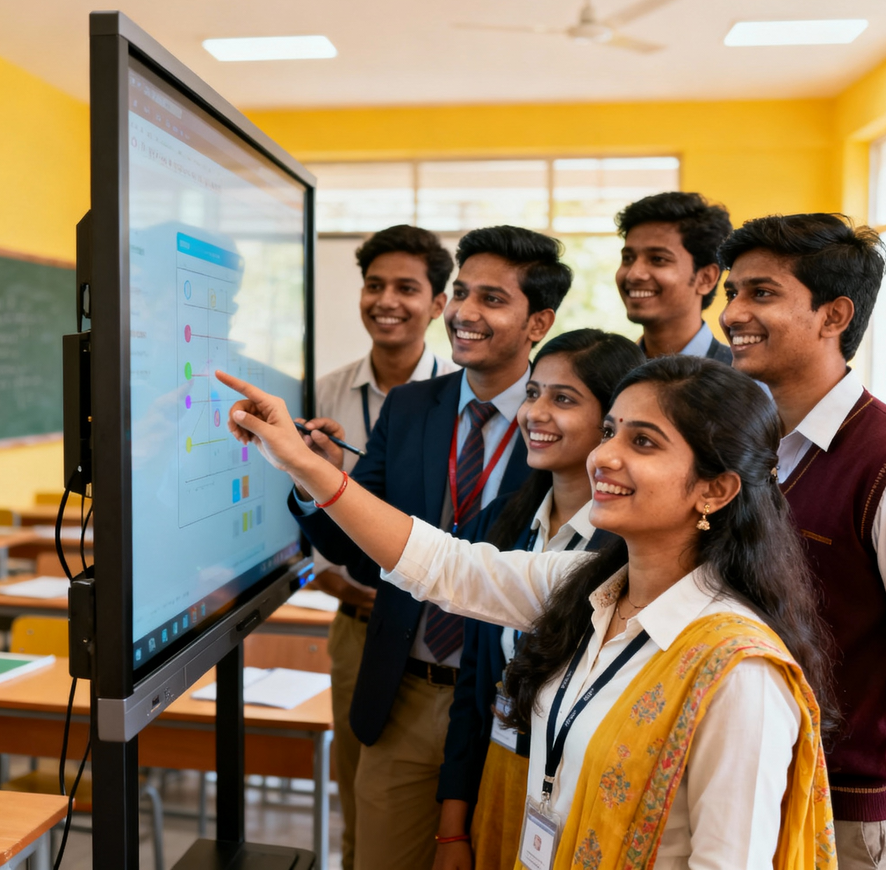
Technology in education is growing fast. Classrooms today look very different from what they were a few years ago. Many CBSE schools are now using smart tools like interactive flat panels, digital podiums, virtual labs, and digital learning platforms.
At Class Teacher Learning Systems, we have worked in education technology for more than 25 years. We help schools use digital tools to improve teaching and learning in a simple and effective way.
Here is a step-by-step guide that can help your school use EdTech the right way.
1. Check Your Current Setup
Start by understanding what your school already has.
- Check the number of devices like laptops, tablets, and panels.
- Test internet speed and coverage in classrooms.
- Find out how confident your teachers are in using digital tools.
This helps you know what needs to be improved and how much training your teachers may need.
2. Set Clear Goals
Think about what you want to achieve by using technology.
Do you want better student engagement? Do you want teachers to save time? Do you want students to learn at their own pace?
Make sure these goals match CBSE and NEP 2020 guidelines. Clear goals help you choose the right tools for your school.
3. Choose the Right Tools
Pick solutions that are easy to use and fit your school’s needs.
At Class Teacher, we offer:
- Interactive Flat Panels (IFPs) to make classes smart and engaging
- Digital Podiums for smooth and powerful teaching presentations
- Virtual Labs to let students do experiments safely
- Learning Management Systems (LMS) for digital lessons and assessments
All our solutions follow CBSE and NEP standards. They are easy for teachers to use and come with full support.
4. Make a Simple Plan
A clear plan makes it easy to introduce technology in steps.
- Step 1: Set up your infrastructure and install devices.
- Step 2: Try the tools in a few classrooms first.
- Step 3: Use the tools across the whole school once teachers are comfortable.
Choose a small group of teachers and staff to lead this project. They can help others and track progress.
5. Train Teachers Well
Teacher training is the most important part of EdTech success. Even the best technology is not useful if teachers do not know how to use it.
At Class Teacher, we offer special training programs for teachers. They learn how to use our tools in real lessons, create interactive classes, and track student learning.
When teachers feel confident, they use technology in creative ways. This improves student results and classroom engagement.
6. Make Learning Accessible
Every student should get the chance to use technology.
Some students may not have devices or internet at home. Schools can support them by offering access during school hours.
Our tools support multilingual content, screen readers, and simple navigation. This helps every student learn better and feel included.
7. Track and Improve
After using the tools for some time, check how they are helping.
Take feedback from teachers, students, and parents.
See if student results, attention, and participation have improved.
With Class Teacher’s analytics tools, you can track progress easily. Data helps you make the right changes when needed.
8. Build a Learning Culture
Schools grow faster when everyone is open to learning.
Encourage teachers to share ideas and try new teaching methods.
Create small clubs or groups where students can learn robotics or coding.
When teachers and students learn together, technology becomes a part of school life.
Conclusion
Using EdTech is not just about adding screens to classrooms. It is about improving how teachers teach and how students learn.
With Class Teacher Learning Systems, schools can move smoothly toward smart education. We support you at every step with technology setup, training, and ongoing guidance.
Smart tools, trained teachers, and active students create classrooms that are ready for the future.



